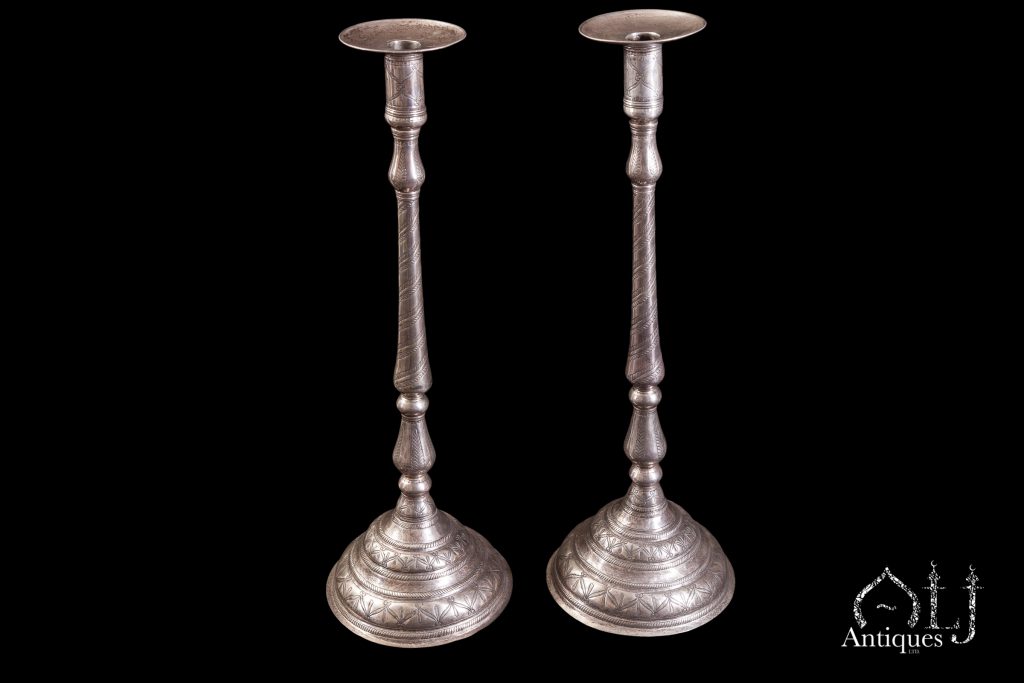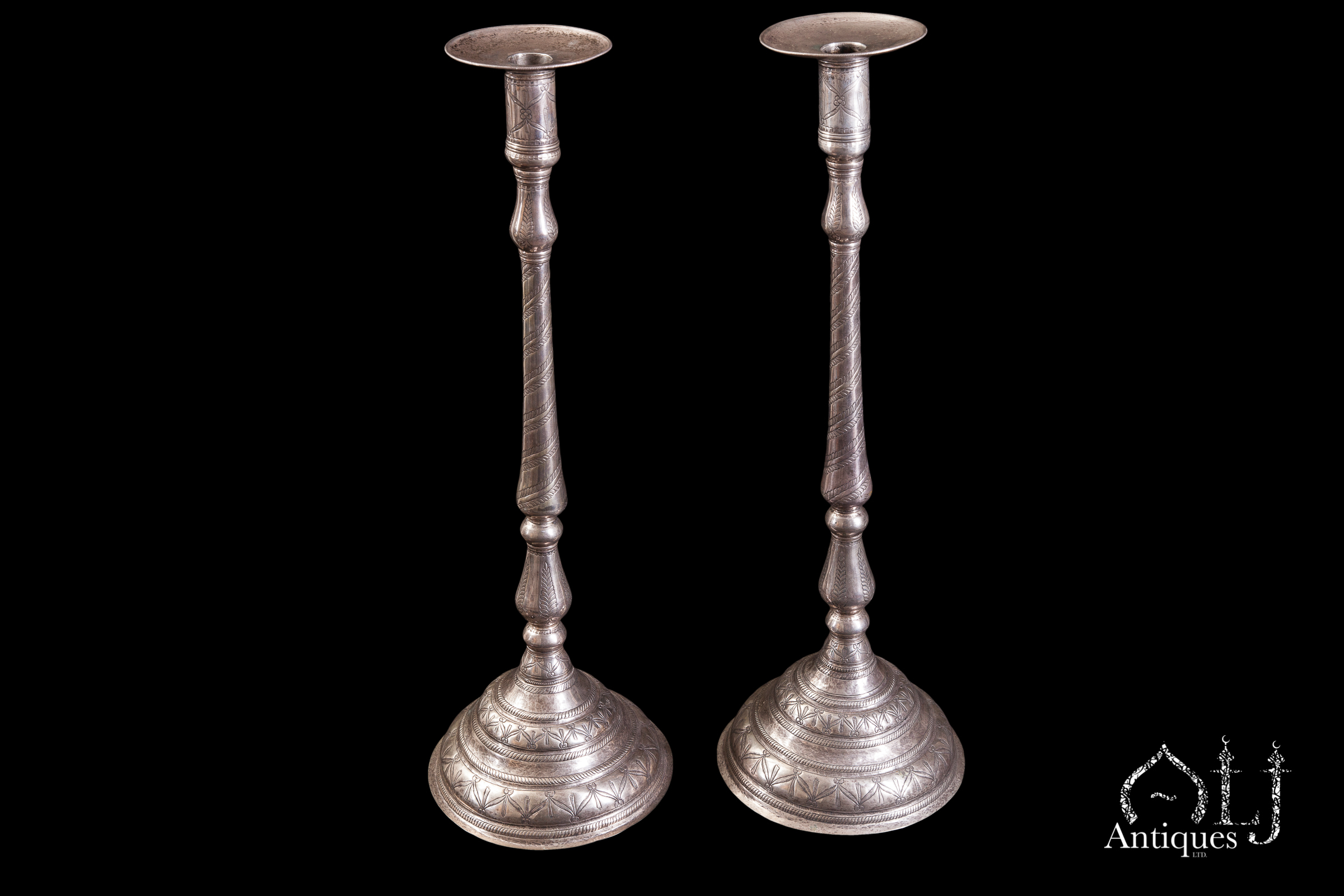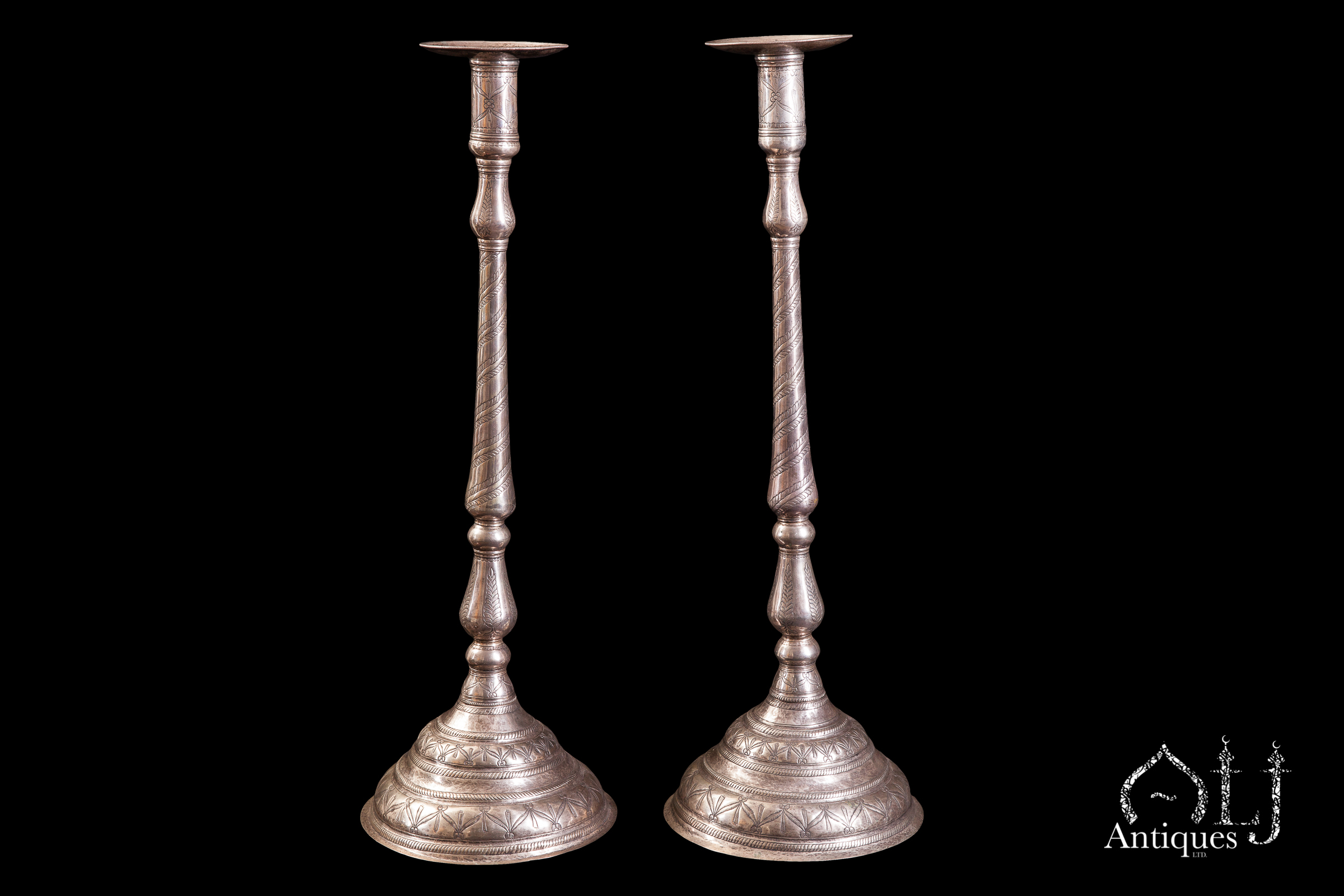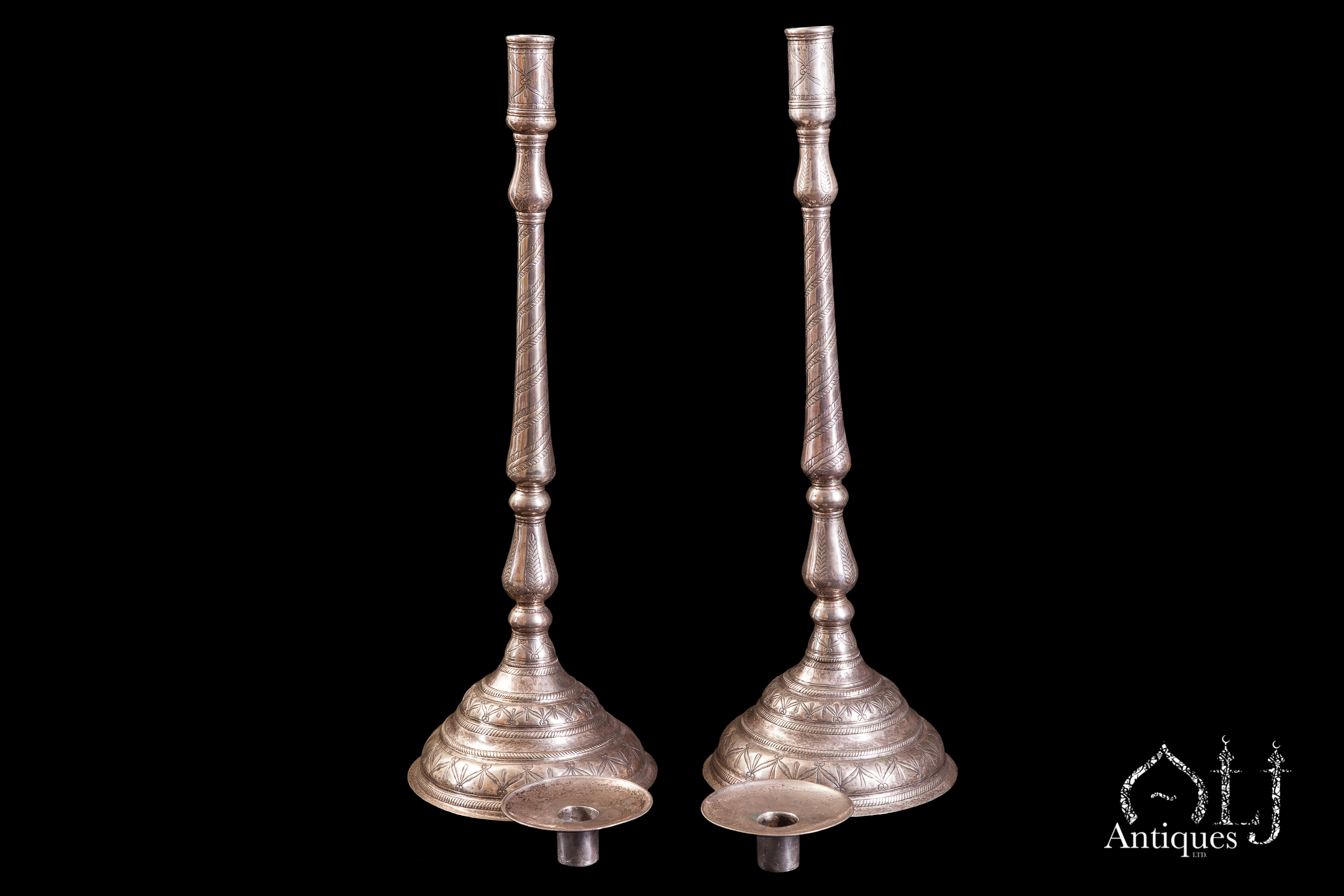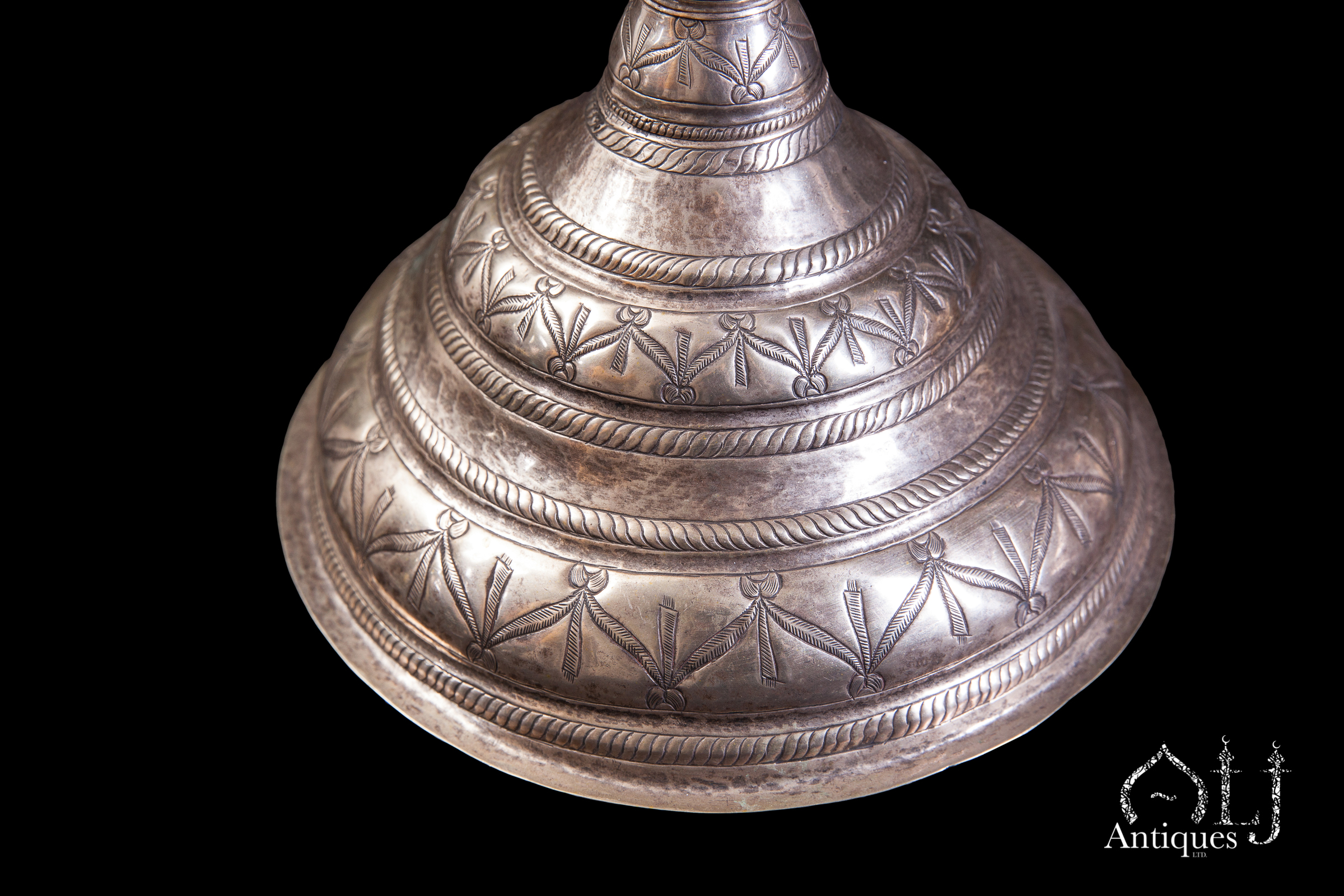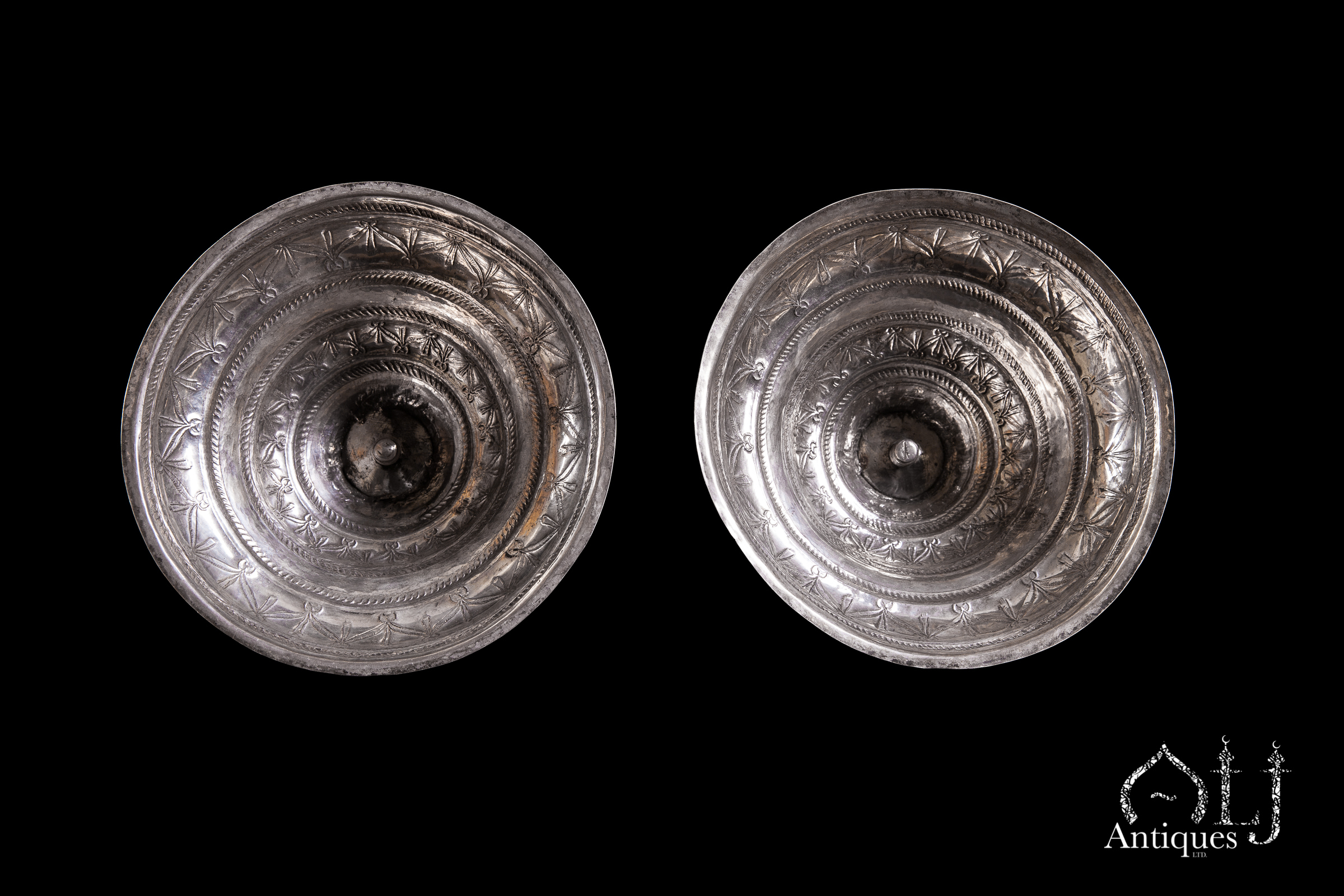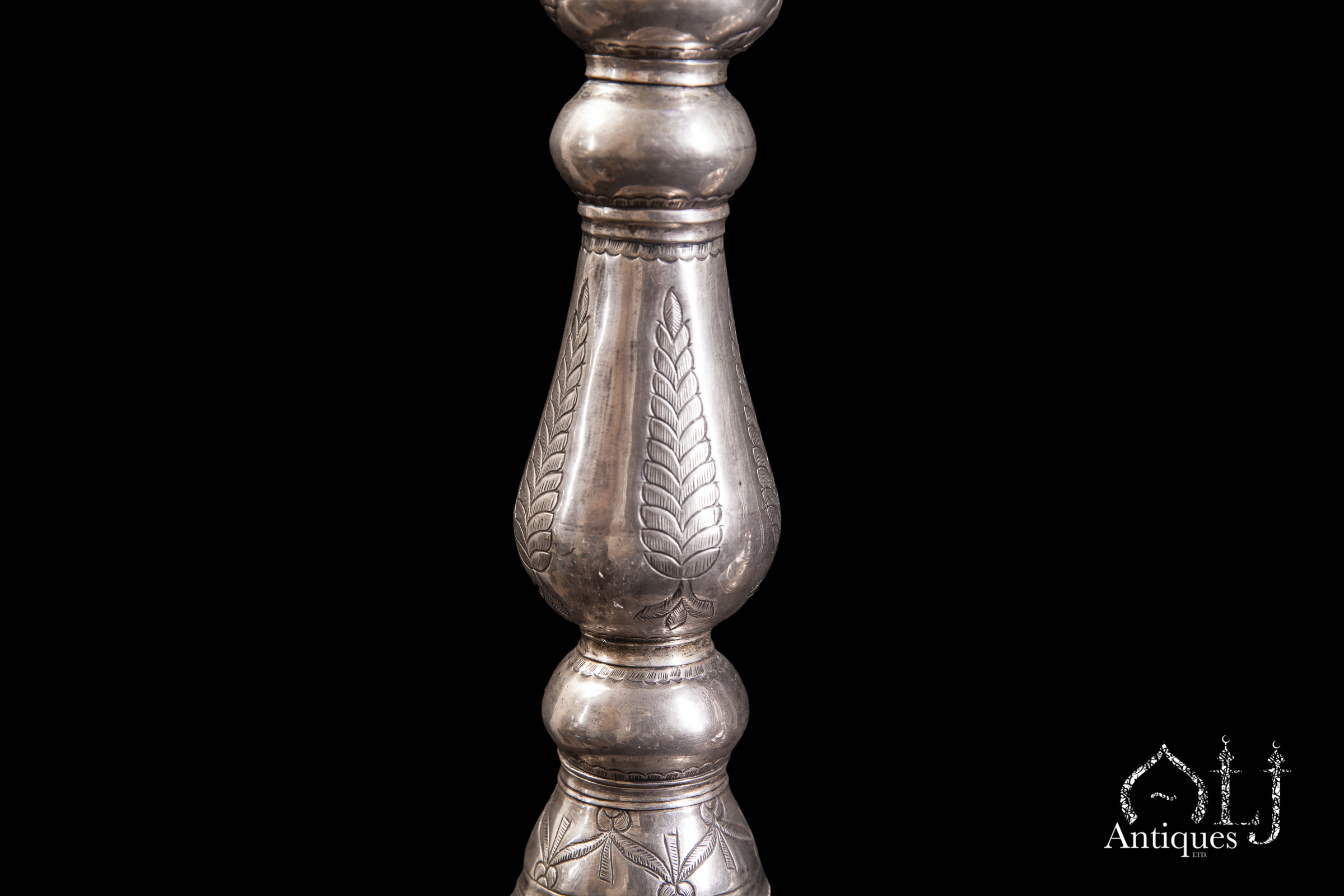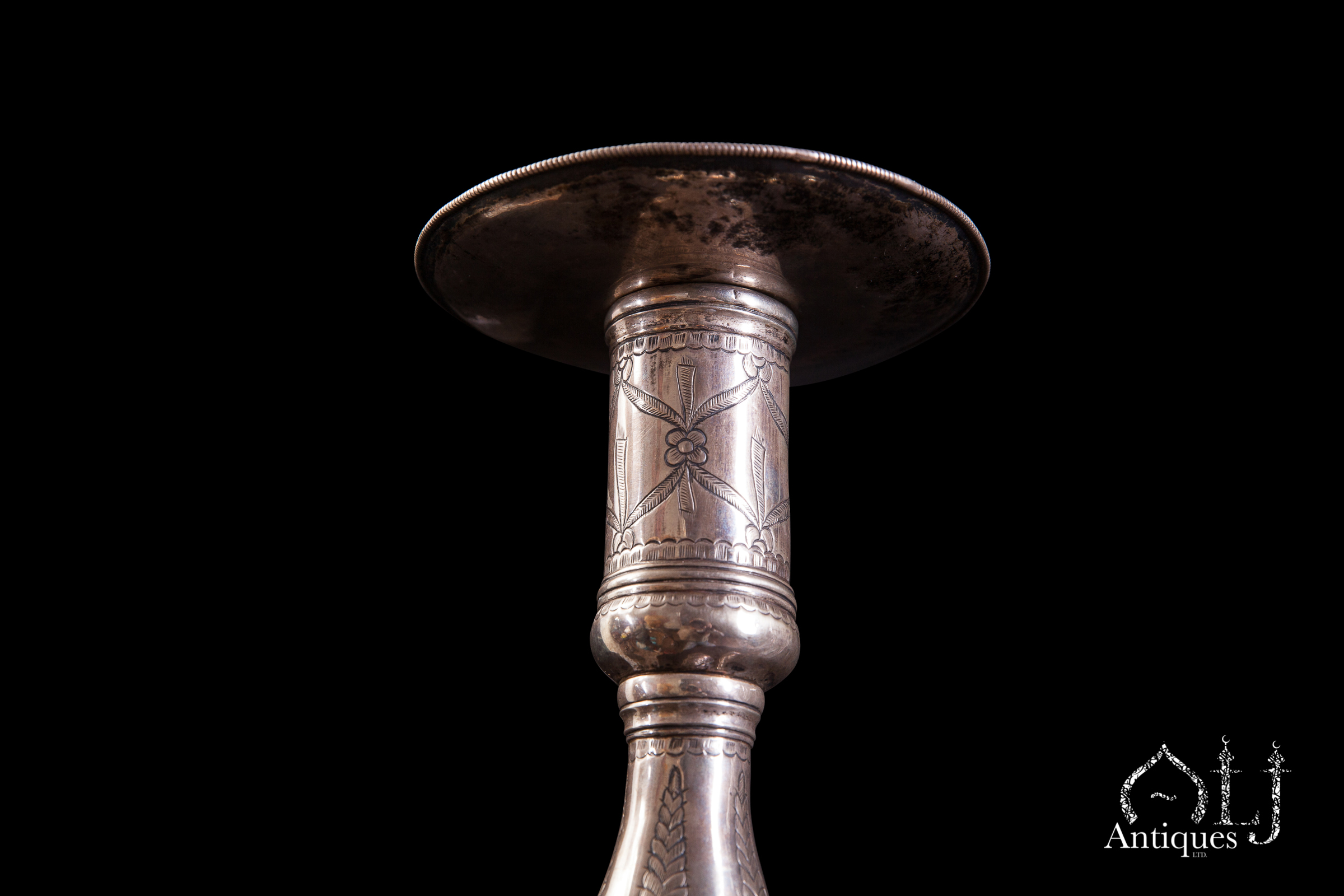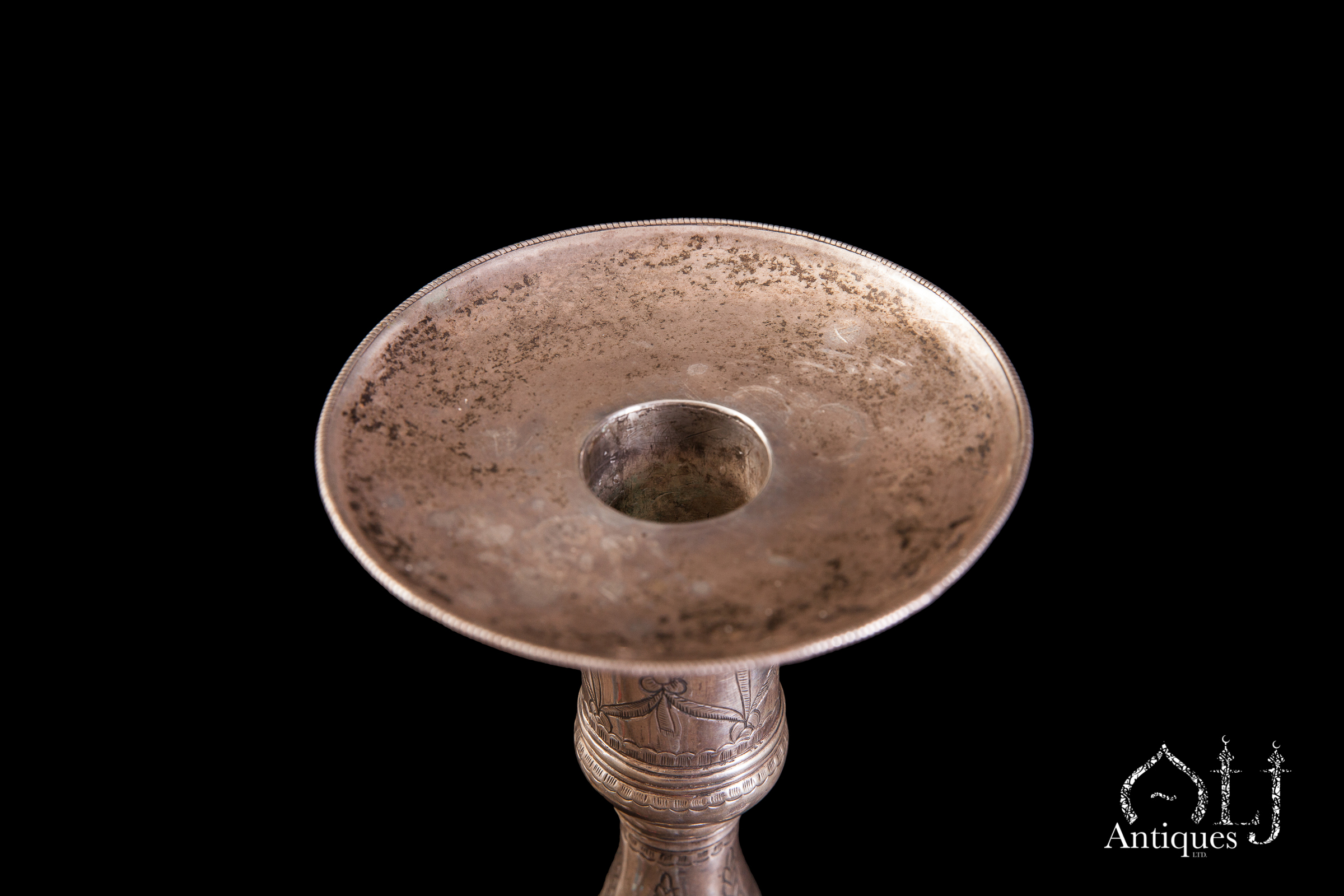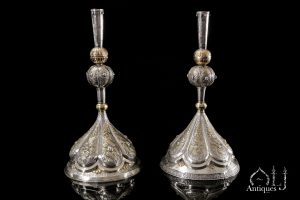Description
During the Ottoman era, marking silverware was crucial and an official requirement.
This ensured that the presented silver item wasn’t made of a different metal and served control and tax purposes. Controlled silverware typically bore the Ottoman Tughra, a stylized form of Arabic Calligraphy spelling the reigning Sultan’s name.
Over time, this marking process evolved to include additional marks the zigzag: a European practice involving testing or taking samples to verify the silver purity.
And during the 19th and early 20th centuries, an additional mark with the Arabic word “Sah,” meaning correct, was introduced.
The evolution of Ottoman silver marking had occasionally included the silversmith’s name and the item’s place of production.
Unmarked Ottoman silverware was less common but occurred, particularly if the silverware items were commissioned to be gifted or used in religious monuments like mosques and churches, also if the unmarked silver items were privately sold to certain local and foreign clients.
Basically, the unmarked silverware was common for items crafted in distant or remote locations from the official Ottoman assay offices, such as in far-flung provinces of the empire.
Our rare pair of tall candlesticks follows a typical Ottoman design.
Each candlestick comprises of five detachable sections with each end had been converted into a threaded screw which can be threaded or inserted into the other section.
The internal screw, attached to the knop, secures the upper elongated hollow column or stem, culminating in a tulip-bud like shoulder connected to the cylindrical capital or scone.
Topping the candlestick is a detachable wax pan or nozzle which was potentially had been commissioned separately than the original candlesticks for the silversmithing is different, this is said but nevertheless there are similar Ottoman candlesticks with detachable wax pan, please see the 17th. century Ottoman pair of Jewelled candlesticks at the Museum of Turkish & Islamic Art, the lot is catalogued on page 304:
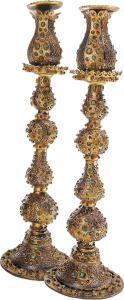
The finely engraved 18th-century style decorations on the exterior exhibit unusual patterns reminiscent of copper-gilt (Tombak) candlesticks.
Please see the below reference Tombak, a similar shaped Tombak candlestick:
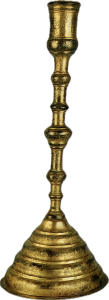
The engravings primarily feature a stylized palmette motif, forming a dome shape that alternates upwards and downwards.
Each dome is crowned with a crescent attached to a banner with tassels, drawing inspiration from Ottoman architectural monuments.
Additionally, the crescent and banner motif reflect Ottoman flags and pole finials used in religious ceremonies and official events.
The knops and capital of the candlestick bear engravings of typical Ottoman-style cypress trees, floral petals, and flower heads.
The long stem boasts a spiral ribbon-like floral branch engraving, evolving from the wider lower part to the narrowing top.
Unfortunately, due to the high cost of the metal, many similar items were sold for scrap and melted down for recycling.
To our knowledge, these silver candlesticks are exceedingly rare, with only one similar known surviving example.
Please see our below reference Asitane:
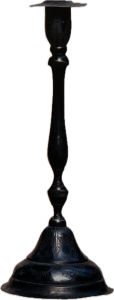
However, similar shapes were crafted using alternative metals like copper-gilt (Tombak), often commissioned for Ottoman Palaces, the elite, and the affluent members of Ottoman society.
Also, these metal choices were specifically intended for donation or decoration of prominent monuments within the Ottoman empire.
Additionally, more common examples of similar shapes were crafted using less expensive materials such as brass, catering to the general public.
The following is a compression of the evolution of the Ottoman candlesticks starting from the typical Mamluk style (Mihrab Candle-Holder) and culminating in a distinctive Ottoman pattern similar to our current lot.
References:
For similar related and close tall shapes of Ottoman candlesticks but made out of other metals such as in copper gilt (Tombak), bronze and brass please see the following:
- For the evolvement of the metal-based Ottoman candlestick please see: Turkische Kunst und Kultur aus Osmanischer Zeit, (Turkish Art & Culture from the Ottoman period, Empire At its greatest Extensions during the 17th century), Publisher Aurel Bongers Recklinghausen,1985, ISBN: 3-7647-0374-1 Lot nos. 6/22, 6/27, 6/28, 6/29 catalogued on pages 295, 298 & 299.
- Please also see, Der Lange Weg Der Turken, The Long Path of the Turks, by Johannes Kalter & Irrene Schonberger, 1500 years of Turkish Culture, please see the evolvement and the mixed Mamluk and Ottoman styles in the making of a candlestick, please see lot no. 143, the two candlesticks catalogued on pages 132.
- Please see, Turk ve Islam Eserleri Muzesi (Turkish and Islamic Works Museum, Bilkent Culture Inititive Publications, Director of the Turkish and Islamic Art Museum, Seracettin Sahin, 2011, ISBN: 978-605-5495-15-2, PLEASE see the two inscribed pairs of Tombak and silver candlesticks, catalogued on pages 107-109.
For other various shapes of typical Ottoman candlesticks but made out of various metals such as in Silver, copper gilt (Tombak), bronze and brass please see the following:
- Asitane, Dergah-I Mevlana Album, Editor-in-Chief Mustafa Caliskan, prepared by Dr. Naci Bakirci, Rumi Publications, ISBN: 978-975-6562-89-5., Please see the engraved silver candlestick which was made in three assembled pieces catalogued on page 162.
- Heritage of the Cilicia Armenian, From the Catholic Museum in Antelias, Lebanon, Benaki Museum, editing Anna Ballian, Everything, 2002, ISBN:960-8154-20-0. Please see lot 47 catalogued on page 114, if compared with our current lot please notice the similarities and the impressive construction of the Armenian unmarked silver candlesticks which were made in 1816 AD, made by the Armenians of Hajin (the regin of Cilicia).
- the Museum of Turkish & Islamic Art, by Nazan Olcer & others, Akbank Cultural & Art Publications:70, Published in 2002, ISBN: 975-7880-21-3, Please see the tall pair of Ottoman gilt-copper tombak candlestick encrusted with stones, also it compared with our lot, they also have a similar sconce, lot catalogued on page 304.
- Please also see, Antika Ansiklopedisi, Antik Palace, Antik A.S., Kultur Yayinlari, Istanbul, Turkey, for other various related tall candlesticks please see, lots exhibited on p.400 & p. 401.
- Please see Tombak, by i.Gundag Kayaoglu, Published by Disbank, 1992, ISBN: 975-7843-00-8.
- please see, Splendours of the Ottoman Sultans, by Dr. Nurhan Atasoy, Edited and translated Dr. Tulay Artan, Istanbul University, Minstry of Cultureof the republic of Turkey, 1992, 745’.09561’07476819-dc 20, please see the two Mamluk style silver candlesticks catalogued on page 243.
- Tulips, Arabesques and Turbans, Decorative Arts from the Ottoman Empire, edited by Yanni Petsopouos, Sotheby Publications, Alexandra Press London, Philip Wilson Publishers Ltd, ISBN: 0 85667 151 7, Please see the various Mamluk Style Ottoman candlesticks, catalogued on pages 38, 39,35-38, also please see the later mixed or hybrid style of Mamluk and Ottoman tulip top candlesticks catalogued on pages 44-44, also please see the tombak or tombac (copper gilt) Mamluk style catalogued on pages 32-34., finally please see the similar ottoman tall shape of candlestick catalogued on page 47.

